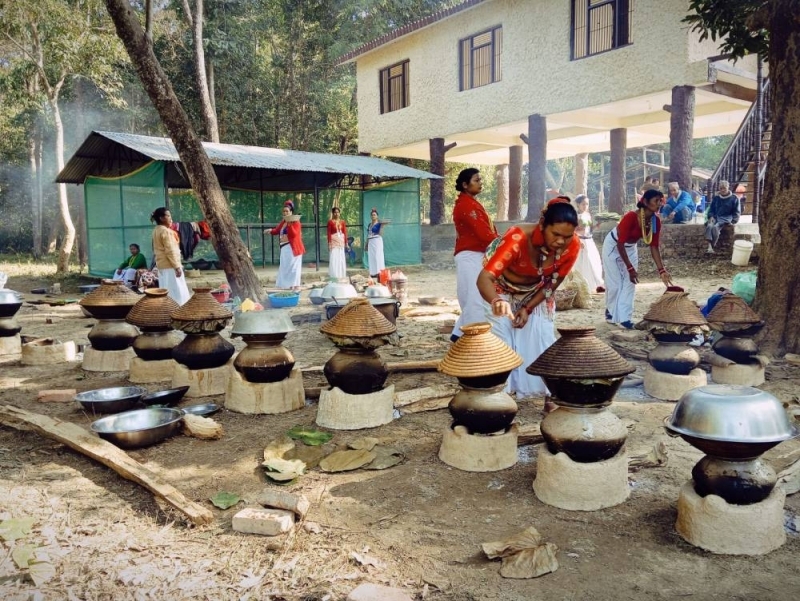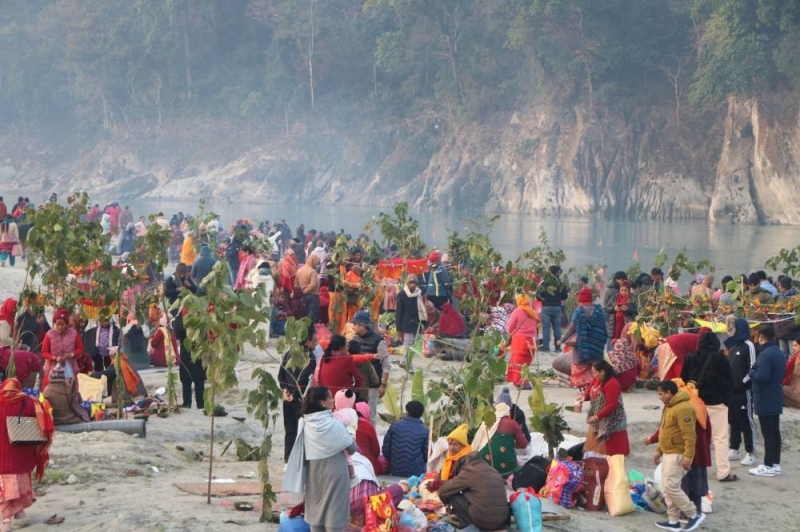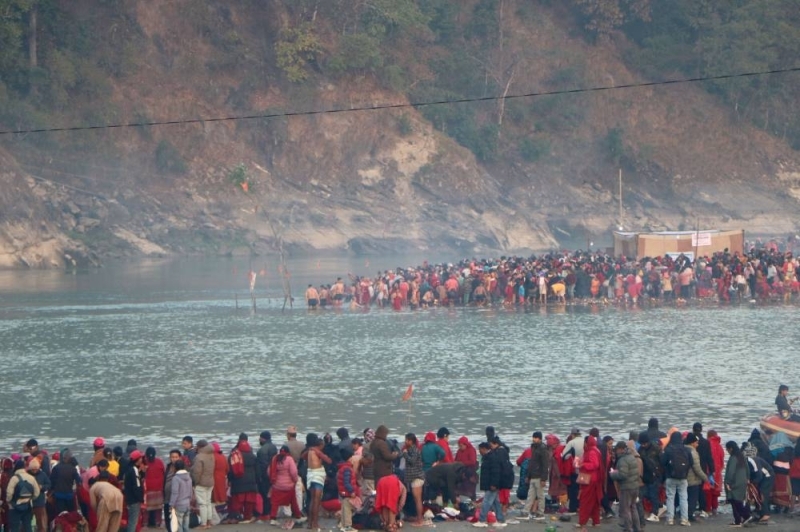Maghe Sankranti, Maghi being celebrated across country; President, PM extend best wishes
KATHMANDU, JANUARY 14
Maghe Sankranti, also known as Makar Sankranti in Hindu tradition, is being celebrated with enthusiasm across various regions and ethnic communities across the country today. This mid-winter festival marks the transition of the sun into the northern hemisphere, symbolizing longer days and shorter nights.
The festival, observed on the first day of the Nepali month of Magh, holds religious, cultural, and health significance. People take ritualistic baths in rivers and ponds, visit temples, and enjoy seasonal delicacies believed to boost warmth and energy. Common festive foods include chaku (molasses), ghee, yams, sesame sweets, nuts, and khichadi.
Maghe Sankranti is notable for its astronomical alignment, as it represents the sun's shift from the Tropic of Capricorn to the Tropic of Cancer. According to texts like the Bhabisya Puran and Dharma Sindhu, observing the festival is said to bring robust health and blessings. Ayurveda connects the festival's foods with immunity-boosting properties.

For the Tharu community, particularly in the southern plains, today marks the beginning of their New Year. Festivities involve public gatherings, cultural dances, and planning for the coming year. Traditional dishes like ghonghi (water snails), dhikri (rice flour cuisine), pork, fish, and alcohol are staples of their feast. The Kirat people, predominantly from Terhathum, Ilam, Panchthar, Dhankuta, Sankhuwasabha, and Taplejung, observe the day as the beginning of their calendar, marking 5,084 years since the reign of Yalambar. Celebrations include cultural dances, seasonal foods, and visits to elders for blessings.
Known as Ghyo Chaku Sallnhu, the Newa community observe this day by consuming ghee and chaku while paying respects to departed souls. Seniors apply warm edible oil to the heads of younger family members. Magars, particularly in the hilly regions of Karnali Province, also observe Maghi with great joy, treating it as the start of their New Year.

On this day, thousands of devotees throng religious sites such as Devghat, Barahakshetra, Ridi, Panauti, Dolalghat, and Kankai for holy dips and rituals. Barahakshetra, located at the confluence of the Koshi and Koka rivers, is believed to absolve sins with a single dip. A grand fair is held here annually.
The Tilmadhav Narayan Temple in Bhaktapur host special ceremony, where Deepakankar Buddha is worshipped. Similar fairs and rituals take place at other holy sites in both Nepal and India, including Prayag and Gangasagar.
On this day, A grand fair is organized at Devghatdham, a major pilgrimage site at the junction of Chitwan, Nawalparasi, and Tanahu districts.

President Ramchandra Paudel extended heartfelt wishes to all Nepalis at home and abroad on the occasion of Maghe Sankranti and Maghi. He emphasized the festival's role in fostering unity, celebrating cultural diversity, and nurturing a shared national identity. The President highlighted how the festival contributes to strengthening brotherhood, reconciliation, and tolerance.
National Assembly Chairman Narayan Prasad Dahal also conveyed his best wishes for peace, happiness, and prosperity to all Nepalis. He encouraged the Tharu and Magar communities to celebrate their New Year with joy, noting that our languages, cultures, festivals, and traditions are integral to our national identity.
Prime Minister KP Sharma Oli wished everyone a joyful Maghe Sankranti and Maghi festival. He recognized the astronomical significance of Makar Sankranti and the importance of traditional foods like ghee, chaku, yams, and khichadi in the celebrations.
In recognition of its cultural significance, the government has declared a public holiday for Maghe Sankranti/Maghi, highlighting its importance in Nepal's cultural calendar.








